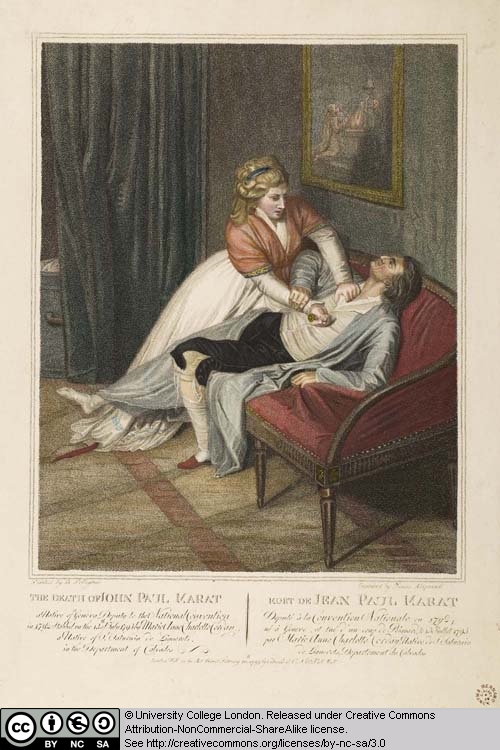14 Death of Marat by Aliprandi

Engraved by James
Aliprandi, after Domenico Pellegrini (1759 – 1840)
The Death of John Paul
Marat , 1794
Stipple engraving with
hand-colouring
Published by Colnaghi
& Co., No.132 Pall Mall,
Jean Paul Marat was the deputy of the Convention and
publisher of the newspaper L’Ami du Peuple.
During the Revolution he had denounced many of his fellow deputies, had called
for a temporary dictatorship and advocated greater use of the guillotine in
order for the Republic to survive. On July 13th 1793, on the eve of the fourth
anniversary of the fall of the Bastille, Charlotte Corday stabbed Marat in his
bathtub. By July 22nd news of the assassination had already reached
This stipple engraving of Marat’s assassination had quite
different intentions from the caricatures published during this period. Indeed
its technique, which was more complex and took longer to produce than an etched
caricature, together with its text in both English and French was aimed at a
more sophisticated and educated class of consumers. The engraving was published
some eight months after the murder and it is possible that while the news of
Marat’s death had made it to
Licensed under the Creative Commons Attribution Non-commercial Share Alike 3.0 License
This resource has been released as an open educational resource (OER) on a Creative Commons 'Attribution Non-commercial Share Alike' license. This means that once downloaded, content can be modified and improved to complement a particular course. This requires, however, that improvements are recycled back into the OER community. All content present at the time of download must be accordingly credited and, in turn, novel content must be appropriately licensed.